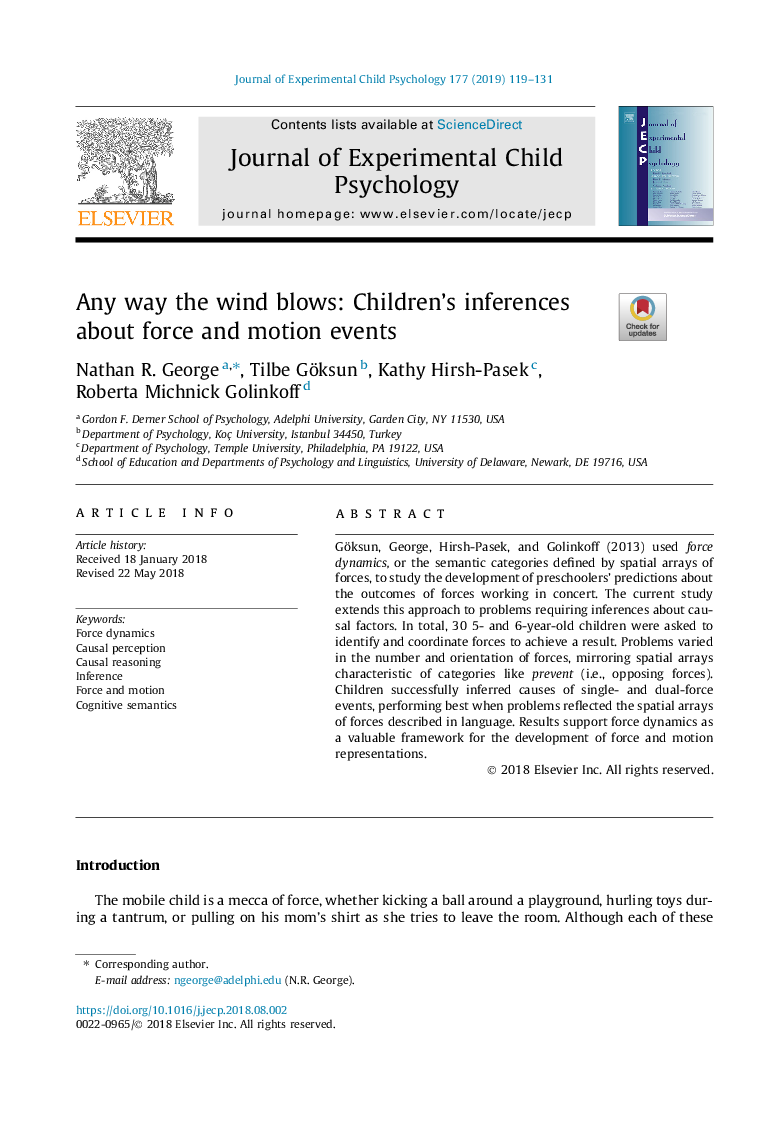| Article ID | Journal | Published Year | Pages | File Type |
|---|---|---|---|---|
| 10140336 | Journal of Experimental Child Psychology | 2019 | 13 Pages |
Abstract
Göksun, George, Hirsh-Pasek, and Golinkoff (2013) used force dynamics, or the semantic categories defined by spatial arrays of forces, to study the development of preschoolers' predictions about the outcomes of forces working in concert. The current study extends this approach to problems requiring inferences about causal factors. In total, 30 5- and 6-year-old children were asked to identify and coordinate forces to achieve a result. Problems varied in the number and orientation of forces, mirroring spatial arrays characteristic of categories like prevent (i.e., opposing forces). Children successfully inferred causes of single- and dual-force events, performing best when problems reflected the spatial arrays of forces described in language. Results support force dynamics as a valuable framework for the development of force and motion representations.
Related Topics
Social Sciences and Humanities
Psychology
Developmental and Educational Psychology
Authors
Nathan R. George, Tilbe Göksun, Kathy Hirsh-Pasek, Roberta Michnick Golinkoff,
